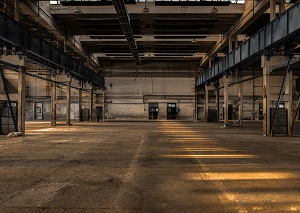4 Trends in Industrial HVAC Systems Management

Five Trends in Industrial Facilities Management

3 Keys to Effective Air and Energy Management
 Make no mistake: air management systems are more efficient than ever. There are three primary contributors to this:
Make no mistake: air management systems are more efficient than ever. There are three primary contributors to this:
- As more businesses understand and look towards the total cost of ownership, manufacturers are delivering units that deliver on the promise of saving energy.
- The increased focus on “green initiatives,” sustainability and environmental impacts of equipment.
- Increased government regulation.
As business grows and more pressure is placed upon minimizing energy consumption, it is becoming important for businesses to find new ways for saving energy. Here are four trends to be aware of as you manage your buildings:
1. Further Integration
Ask any plant manager what their main goals for the future of their buildings are, and usually automation is somewhere near the top. Having the HVAC, lighting, and access control systems work in synergy is one of the simplest ways to save energy. For example, during the summer when the plant shuts down for the night and people go home, a controller can run the HVAC system for a period of time to exhaust the process heat and bring in clean, cool air to the workspace so when the workers arrive in the morning the plant no longer has that hot air. During the winter, this same controller can be set to drop the plant temperature when the workers leave for the night and then raise the temperature before the workers arrive for the start of the workday.
2. Maintaining Proprietary Protocols While Evolving
In recent years, one of the biggest requests/gripes from building managers and procurement specialists was more interoperability for their HVAC control systems. The old guard required operations from a single manufacturer for the life of the building, and although changes in open protocols have developed, they are mostly at the field or floor level.
The real push for energy efficiency in a commercial HVAC system comes from when protocols are opened up at the management level. As this occurs, the integration of new components is more seamless, and a more customized system can be designed for a specific building, factory, or warehouse’s needs.
3. The Realization of Smart Buildings
Industrial plants are moving towards automated and Smart Buildings at breakneck speed. Building Management Systems that tie together the coordinated operation of multiple HVAC units and other building processes is becoming more prevalent every day. Businesses can realize significant savings simply by paying attention to what is happening within their facility and running equipment only as needed.
4. New Regulations Placed on Air-Conditioners Moving Forward
As government continues to grow, so will the number of regulations affecting HVAC systems. Heating and cooling standards will continue to change, and new regulations are going to be more specific rather than applied in a broad stroke. This means building owners need to be smarter in how they operate their buildings and processes.
What’s important to remember is that these trends are steadily growing stronger. The benefits are plentiful, from lower energy bills to a more comfortable workplace, to a lessened impact on the environment.




